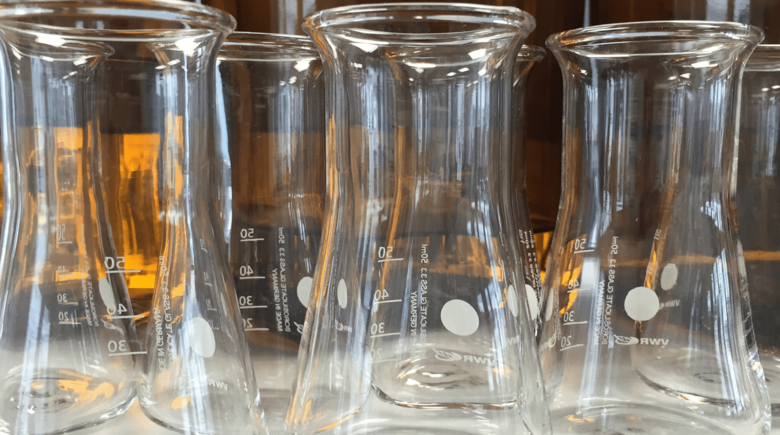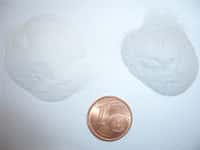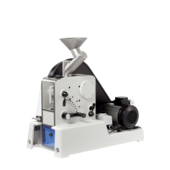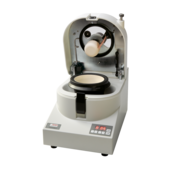Back to overview
Hydrolytic Class of Glass
Product packaging as implicitness
Packaging in all variations is an indispensable part of today’s society. So it is implicit that almost every sold product is packaged. The materials from which the packaging is made are often viewed non-critical. But it is to be assumed that substances from packaging transfer into the wrapped product. Since many decades this process has been proven for glass and alkali and earth alkali have been detected. In order to obtain this information in a quantifiable manner, rules of analysis for the determination of the hydrolytic class of glass were created. For example mineral water absorbs sodium and potassium from a glass bottle, so is this process completely safe and neutral in taste.
Glass as a primary packaging of pharmaceutical products is subject to higher requirements and is divided according to the European Pharmacopoeia into the hydrolytic classes.
Glass as primary packaging
The regulation „“EUROPEAN PHARMACOPOEIA 3.2.1. Glass Containers for pharmaceutical use” mandates the requirements for medical glass containers and defines its properties. One criterion for testing is the determination of the hydrolytic class according to „DIN ISO 719“. Here glass powder with a particle size between 315 µm and 500 µm is utilized during the production of the eluate. In this DIN-rule, the steps for manual sample preparation are described and the utilization of a mill is explicitly permitted. But for utilizing a mill no further precise rules exist.
FRITSCH Mills for the production of glass powder
A manual sample preparation always bears the danger of the subjective influence by the user. Additionally is this step very labour intensive. Therefore a mill was sought after which could comminute thin glass vials in the demanded particle range. Based on manual comminution, a mill with a possible low energy application was chosen. This was the Mortar Grinder PULVERISETTE 2. The sieving step necessary with manual comminution was to be avoided.
The evaluation of the first tests showed, that the demanded prerequisites of particles in a similar size range cannot be obtained in one step. Sieving is inevitable thus. The steel abrasion of the grinding set leads unavoidably to a colouring of the sample. In order to avoid this abrasion, the additional tests were conducted parallel with an agate grinding set.
With each grinding, the material is incorporated from the grinding tools into the product. Steel tools are utilized with a manual comminution. There is a hint noted, that iron should be removed with a permanent magnet. Now when utilizing the mill with a steel grinding set, microscopic small iron particles and accompanying elements remain on the surface of the glass particles due to physisorption. Therefore these cannot be removed with a magnet.
An influence on the ensuing analysis cannot be omitted though.
For all components of the FRITSCH mills, the utilized materials and their exact chemical composition are documented. This database is also available online.
Check analysis
The company Zentrum für Glas & Umweltanalytik GmbH (Centre for glass investigations and environmental analysis) examined independent from FRITSCH both samples.
The chart illustrates the analysed concentrations
| Material of the grinding set | Iron Oxide [ppm] | Chromium oxide [ppm] | Manganese oxide [ppm] |
| Stainless steel | 102 | 29 | 6 |
| Agate | 26 | 1 | 1 |
The by 78 ppm increased value for iron oxide of the coloured sample surprises, since the Mortar Grinder offers a very gentle method of comminution and additionally the dwell time inside the mill was very brief.
Handling
In each case, a glass vial was manually crushed inside the grinding bowl with a pestle and then comminuted for a minute. The fraction 315 to 500 µm was sieved off. Several cycles of preparation are necessary in order to produce the required amount. The fraction 500 µm was collected and again comminuted for a minute. In this manner glass powder in the demanded fraction for the determination of the hydrolytic class according to DIN ISO 719 was produced with a mill. Comparative tests of samples comminuted with different methods were not conducted.
The analysis
The hydrolytic class of glass quantifies the extractable basic shares. Two grams of the described particle share are weighed, boiled for 60 minutes in 50 ml de-ionized water at 98o C and then with 0.1 M HCL titrated down to the neutral point. From the utilized HCL in ml results the hydrolytic class according to ISO 179 (DIN12111).
Summary
- The complex and subjectively influenced manual comminution of glass can be alleviated by the utilization of a mill.
- The production of powders of particles in a similar size range is only possible through milling and fractioning.
- For thick walled glass the comminution with a Jaw Crusher is recommended.
- The titration may by no means be influenced from contamination from material from the grinding tools. Here the corresponding superior tools are available.
-
Download the FRITSCH-report as PDF file
-
Detailed grinding reports
Back to overview







